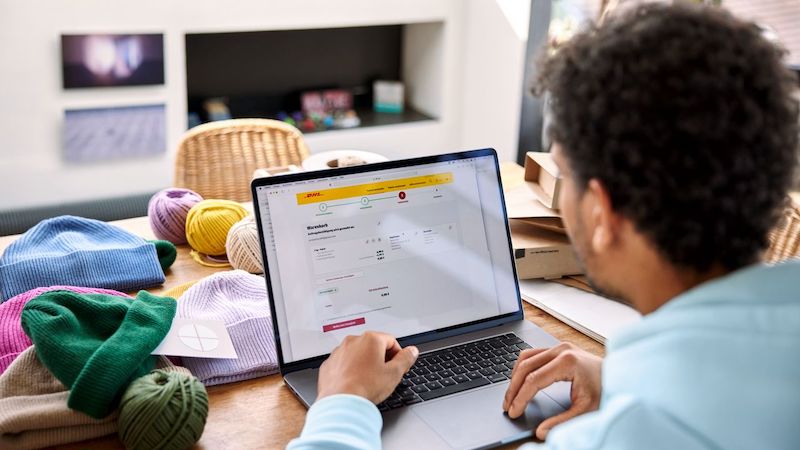Grow your business with the Discover newsletter
Logistics advice & insights straight to your inbox
Subscribe now
E-commerce has revolutionised the way we shop, and with this evolution comes an increase in product returns. As a natural part of the online shopping experience, returns are an aspect that cannot be overlooked. It is especially crucial that you manage e-commerce returns effectively to maintain customer satisfaction and ensure the success of your online business. In this article, we will discuss what e-commerce returns are, why they are important, and how using DHL Express' On-Demand Delivery (ODD) feature can help streamline your returns strategy.
E-commerce returns occur when a customer sends back a purchased product to the retailer. They happen when a customer sends back a purchased product, either because they changed their mind, ordered the wrong size, or received a defective item. Having an effective strategy to deal with returns is crucial for keeping customers happy, and for preventing your business from turning into a warehouse of unwanted goods.
An effective return logistics strategy is essential for maintaining customer satisfaction, as it can lead to repeat business and positive word-of-mouth. It also helps businesses minimise losses associated with returned products and can be a competitive advantage in the crowded e-commerce marketplace.
Purchase: The online shopping spree begins, and the customer clicks "Buy Now."
Request to return: If the customer is unsatisfied with the product, they initiate a return request through the retailer's website or customer service.
Generate shipping label: The retailer provides the customer with a prepaid shipping label to return the product.
Drop-off: The customer bids adieu to their package at a designated location or schedules a pickup with a courier like DHL Express.
Duty drawback: For international adventures, you might be able to claim a refund on customs duties paid for the returned goodies.
Duty returns: Time for some paperwork. You'll need to process the necessary documents for returning goods and any customs duties involved.
Arrival back at warehouse: The returned product arrives at the retailer's warehouse, where it is inspected and processed accordingly.
When developing your returns management strategy and devising a system, it is crucial to consider several key factors. Firstly, be aware of the customs and tax regulations in the countries you are shipping to and from, as they can significantly impact the return process. Secondly, you will need to decide on the primary focus of your policy: will it favour exchanges or refunds, or will you offer both options to accommodate varying customer preferences? Lastly, ensure that your returns strategy is tailored to the types of products you sell, as different items may necessitate unique considerations (e.g., perishable goods, electronics, or apparel).

An effective e-commerce return policy should prioritise customer satisfaction and operational efficiency. You can adopt a customer-centric approach by including the following key elements:
Clear explanation: The return policy should be communicated in a straightforward and transparent manner, outlining the return process in detail. This should include any requirements, such as the condition of the returned product, and limitations, such as non-returnable items, to ensure customers are well-informed before initiating a return.
Prepaid shipping label: Offering customers a prepaid shipping label can greatly simplify the return process, as it eliminates the need for them to arrange and pay for shipping. This not only enhances the customer experience but also allows businesses to maintain control over shipping costs and carrier choices.
Free or low-cost return shipping: By providing free or low-cost return shipping options, businesses can minimise the financial burden on customers and encourage them to make purchases with confidence, knowing that they can return items without incurring significant costs. This can lead to increased customer loyalty and a more positive brand image.
Reasonable time frame: Allowing customers a reasonable time frame to initiate a return, typically 30 days or more, demonstrates a commitment to customer satisfaction and understanding. This extended window gives customers the flexibility to assess their purchase thoroughly and decide whether to keep or return the product without feeling rushed. It is essential, however, to strike a balance between providing ample time for returns and preventing excessive delays that could affect inventory management and resale opportunities.
Reducing returns is essential for e-commerce businesses to maintain customer satisfaction while minimising costs and operational challenges. To achieve this, ensure that product descriptions are detailed, accurate, and up-to-date, supported by high-quality images and videos to provide a clear understanding of the items. For apparel and footwear, comprehensive sizing guides catering to different regions and measurement systems can help customers choose the correct size.
Encouraging customer reviews and Q&A sections will set realistic expectations about the products, while personalised recommendations based on customer data and purchase history can further reduce the likelihood of returns. Additionally, a well-trained and responsive customer support team can address concerns and questions promptly, often resolving issues before they result in returns. Finally, for certain products, utilising augmented reality (AR) and virtual try-ons can give customers a better sense of how items may look or fit, further reducing the chances of returns.
DHL Express' On-Demand Delivery (ODD) is essential for managing returns and offering viable solutions due to the numerous benefits it offers to both e-commerce businesses and their customers. ODD allows customers to choose from various delivery options, such as scheduling a new pickup or selecting a preferred delivery date and time. This flexibility caters to individual customer preferences and ensures a convenient, positive experience when returning products.
The convenience and flexibility offered by DHL Express' ODD contribute to a more seamless and hassle-free return process for customers. A positive return experience can lead to increased customer satisfaction, loyalty, and the likelihood of repeat business.
DHL Express is a leading logistics provider that offers efficient and fast delivery options that allow you to offer viable returns solutions to your customers. Our shipping specialists handle your returns expertly, from pick up to delivery back to your warehouse. Sign up for a DHL Express account today.